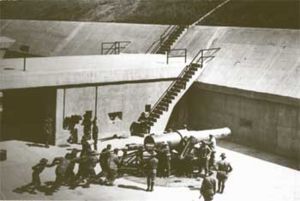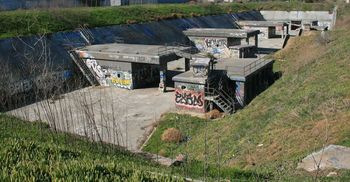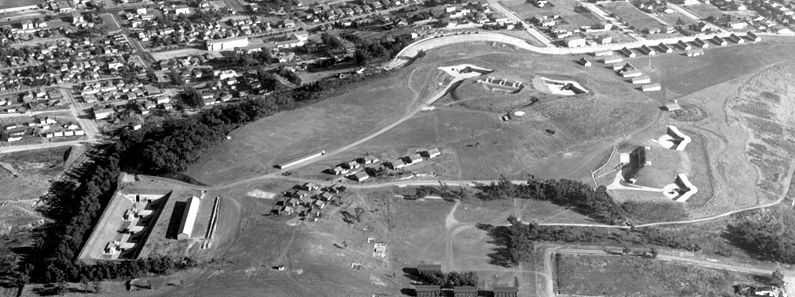Battery Barlow-Saxton
|
Battery Barlow-Saxton (1915-1943) - Battery Barlow-Saxton was a reinforced concrete Taft Period 12" mortar battery located on Fort MacArthur, Los Angeles County, California. The Battery was named for Brigadier General John Whitney Barlow (Cullum 1901) and Major General Rufus Saxton (Cullum 1424). Battery construction started 1 Apr 1915, was completed 27 Jun 1919 and transferred to the Coast Artillery for use 27 Jun 1919 at a total cost of $290,300. Guns were mounted 29 Dec 1916. The Battery was deactivated in 1943.
World War I (1917-1918)Part of the Harbor Defense of Los Angeles. 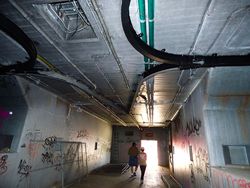 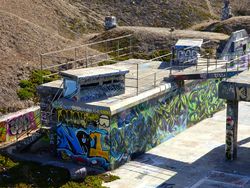 Battery Barlow-Saxton was a reinforced concrete Taft Period mortar battery with eight rifled M1912 12" mortars mounted on M1896III mortar carriages. This battery was unusual because all eight of the mortars were in a straight line instead of being clustered in groups of four. This configuration made them easier to service and faster to load and fire. The battery was divided into four mortar pits with two mortars in each pit. The first two mortar pits were designated as Battery Saxton and the second two pits were designated as Battery Barlow but the complete structure was referred to as Battery Barlow-Saxton. Each of the mortars had a 360-degree field of fire and a range of about 11 miles with a 700 lb projectile. With a 1,046 lb projectile, the range was reduced to about 6.7 miles. Concrete covered underground shell and powder storage rooms lined the front of the mortar pits. The shells were moved from the storage area to the edge of the mortar pits by movable winches on overhead tracks and then placed on shell carts for movement to the individual mortars. In the back of each pair of mortar pits was a common plotting room with separated data signaling booths for each of the pits. The data signaling booths displayed azimuth and elevation data to each of the mortar pits. The mortars could be either salvoed or fired independently.
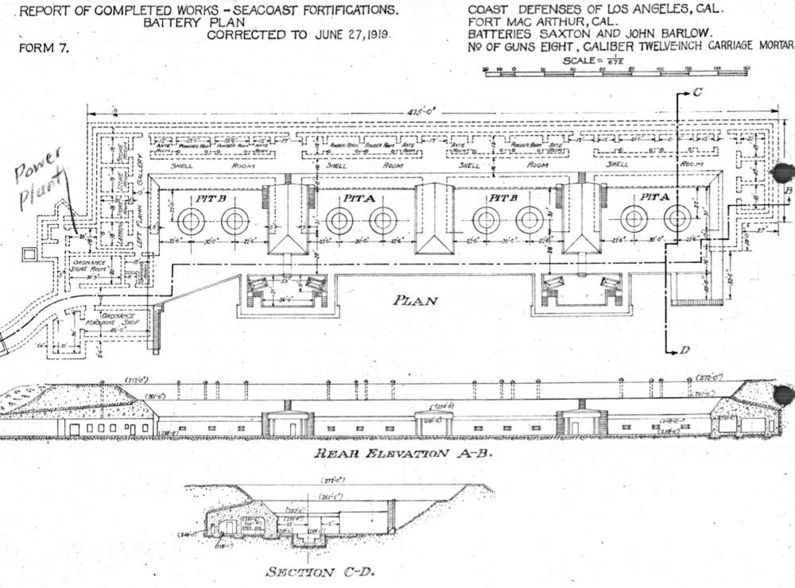
World War II (1941-1945)Battery Barlow-Saxton was considered obsolete at the beginning of World War II. It was kept in operation pending the completion of the modernization program. The Battery was declared surplus in 1943. The mortars and carriages were ordered salvaged on 12 Dec 1944. Current Status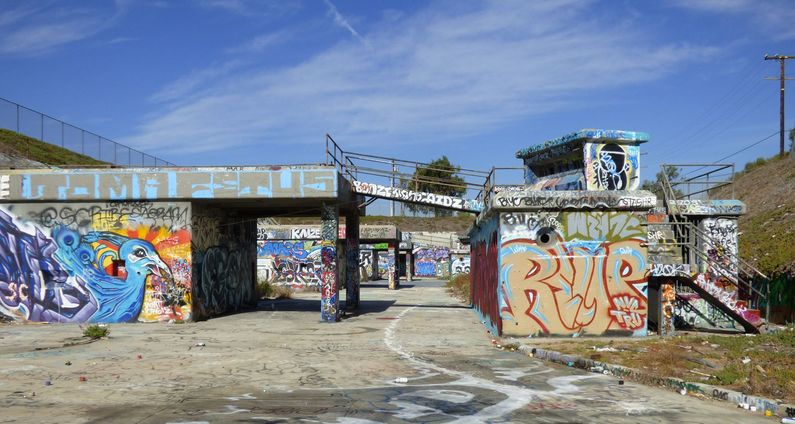
No guns or carriages in place. Covered with graffiti and trash, unprotected by the Los Angeles Unified School District who has possession of the property (2009). The graffiti and trash problem is significantly worse at the time of the 2014 visit. The school district is not maintaining the property and is actively preventing volunteers from cleaning it up. The battery now serves as a training ground for local taggers. The site is fenced off to prevent public access but large holes in the fence provide an opportunity for viewing the site.
See Also: Sources:
Links:
Picture Gallery
| |||||||||||||||||||||||||||||||||||||||||||||||||||||||||||||||||||||||||||||||||||||||||||||||||||||||||||||||||||||||||||||||
